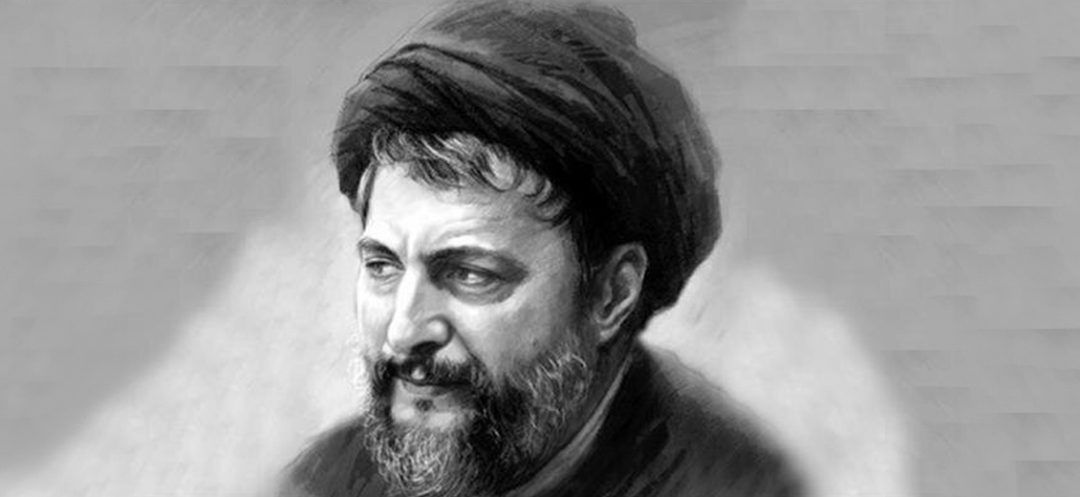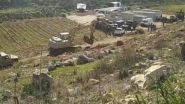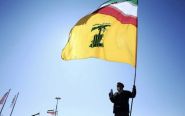
The Libyan capital, August 25, 1978: Imam Moussa Sadr, the spiritual leader of the Lebanese Shia community and President of the Supreme Islamic Shia Council (SISC), along with two of his close associates Sheikh Mohammad Yacoub and journalist Abbas Badreddine, arrived in Libya at the invitation of then-leader Colonel Moammar Gaddafi. On August 31, Imam Sadr and his two companions were seen for the last time in Libya. Since then, they have been reported missing. The Libyan regime claimed they had flown to Rome, but Italian authorities confirmed that the three men never arrived, and no trace of them was ever found in Italy.
This disappearance occurred amid a highly volatile situation in the Middle East: Ayatollah Khomeini was orchestrating the Islamic Revolution from his Parisian exile in Neauphle-le-Château, starting the winter of 1978. Meanwhile, the escalating tensions in southern Lebanon, where armed Palestinian groups were repeatedly launching Katyusha rockets on Israel, provoked retaliatory air raids on villages predominantly Shia-inhabited.
The heavy impact of Moussa Sadr's disappearance is still deeply felt today. As a pivotal figure, the missing imam was instrumental in asserting the Shia community’s presence and rights in Lebanon, effectively ending a long history of ostracism.
For example, during the Ottoman rule, the advisory council for the two kaimakams established in Mount Lebanon in the mid-19th century included representatives from Maronite, Greek-Catholic, Greek-Orthodox, Sunni, and Druze communities. However, the Shia, who had a minimal presence in Mount Lebanon, were represented by a Sunni delegate.
After the formation of Greater Lebanon in 1920, political marginalization was exacerbated by a pronounced socio-economic divide. Moreover, Mount Lebanon (or Little Lebanon) had enjoyed substantial autonomy under Ottoman rule, resulting in notable advancements in education, culture, healthcare, and economic development. However, the peripheral regions—such as the South, the Bekaa, and parts of the North—that were integrated into this “center” (Beirut and Mount Lebanon) in 1920 were predominantly Shia and had not benefited from the same level of development experienced in Mount Lebanon.
This socio-economic gap between the “center” and the periphery persisted after independence in 1943, setting the stage for the missing imam to play a crucial role from the 1960s onward.
Originally from Jabal Amel
Moussa Sadr was born in Qom, Iran, in 1928, to a family originally from Jabal Amel in southern Lebanon. He then pursued his religious and classic academic studies in Qom, Tehran, and Najaf in Iraq. He moved to Lebanon in 1959 and acquired Lebanese citizenship in 1963. In the 1960s, Sadr spearheaded a major outreach campaign, organizing conferences, meetings, and debates in clubs and places of worship. This initiative was parallel to the efforts of two other dignitary Shia figures, Sheikh Mohammed Mehdi Chamseddine and Sheikh Mohammed Hussein Fadlallah, who also arrived in Beirut in the 1960s after accomplishing their studies in Qom and Najaf.
Moussa Sadr swiftly distinguished himself in the Shia community thanks to his exceptional charisma, commanding presence, and deep religious knowledge. These fundamental qualities were also embodied by Sheikh Chamseddine and Sheikh Fadlallah, who similarly traveled throughout the country to educate and mobilize the Shia population.
Imam Sadr articulated a clear vision for the political and social strategies needed to guide the community towards comprehensive development and to advocate for Shia rights. By the late 1960s, his relentless efforts had made him a pivotal and influential figure in both political and communal aspect.
In 1967, Moussa Sadr secured the creation of the Supreme Islamic Shia Council (SISC) from the central government, a body aimed at strengthening the socio-political presence and identity of the Shia community. He assumed its presidency in May 1969. However, due to the inactivity of traditional leaders, the SISC turned into merely a forum for community notables. In response, the Imam shifted his focus to establishing the “Movement of the Dispossessed” in 1974, a movement dedicated to championing the political aspirations of the Shia community and addressing socio-economic underdevelopment.
The “Movement of the Dispossessed” has been the first political structure established by the Shia community since the Ottoman era. Many analysts believe the purpose of the movement was to shield the Shia underclass from the influence of armed Palestinian groups and leftist parties, particularly the Communist Party and the Communist Action Organization in Lebanon (CAOL) led by Mohsen Ibrahim. Building on the “Movement of the Dispossessed,”, Moussa Sadr announced the formation of the “Amal” militia in January 1975, just three months before the onset of the Lebanese Civil War in April 13, 1975. Although the militia was established in 1974, Imam Sadr had kept it secret until its existence was revealed by a fatal accident at a training camp in the Bekaa Valley.
Socio-Economic Development
Through his extensive political and military efforts, Moussa Sadr spearheaded the awakening of the Lebanese Shia community, ending decades of marginalization from the 1960s onward. In addition, the imam has not overlooked the community’s socio-economic needs, and has established, starting 1963, a network of schools, primary healthcare centers, and vocational training institutes, especially for Shia girls and young women. To achieve these goals, he closely worked with Mgr. Grégoire Haddad, the former Greek-Catholic bishop of Beirut and founder of the Social Movement. Today, this network remains active under the Moussa Sadr Foundation, led by his sister, Rabab Sadr.
“Pro-Lebanese” Approach and Openness Policy
From Moussa Sadr’s extensive journey, Lebanese people will remember not only his historic contribution to the Shia awakening but also his “pro-Lebanese” stance and his openness policy, especially towards the Christian community. In 1963, he stood out as the only Shia dignitary to attend the enthronement of Pope Paul VI. At the national level, he maintained strong relationships with figures such as Bishop Grégoire Haddad and former MP Pierre Hélou. At the outset of the Lebanese Civil War, he delivered notable sermons on Good Friday at the Saint Louis Capuchin Cathedral in Beirut’s downtown. True to his inclusive approach, he refused to fully engage in the Lebanese war and undertook a hunger strike in Beirut in an attempt to compel the militias to cease fighting, though his efforts ultimately proved unsuccessful.
The most significant legacy of Moussa Sadr’s work lies in his staunchly “pro-Lebanese” stance, which was notably ahead of its time. His approach sharply contrasted with the rising transnational Shia ambition. By the winter of 1978, Khomeini’s ideology of Wilāyat al-Faqīh was beginning to emerge. This ideology would later face substantial criticism from figures such as Imam Mohammed Mehdi Chamseddine and Mohammed Hussein Fadlallah, who emerged as leading opponents of the Wilāyat al-Faqīh system, established by Ayatollah Khomeini with the onset of the Iranian Islamic Revolution in 1979.
Read more





Comments